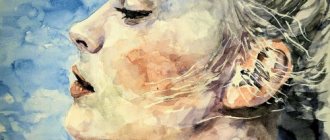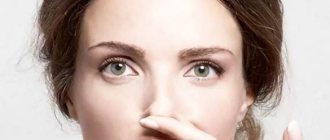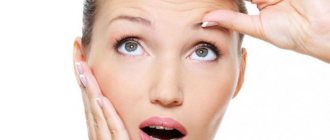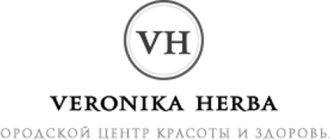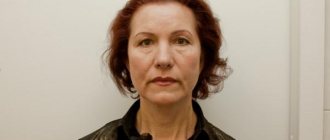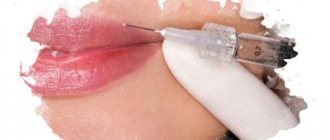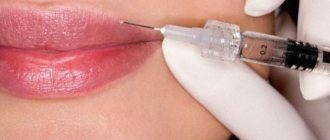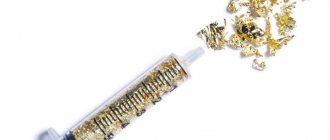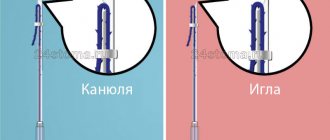Phased changes
The rehabilitation period after rhinoplasty depends on the complexity of the operation. So, if the defect is small, the patient will receive minimal injuries. With a complex of corrections, the area of soft tissue, bones and cartilage is affected. Therefore, recovery time increases and discomfort becomes stronger.
Rehabilitation is also influenced by the individual characteristics of the body, the method of implementation, materials, and compliance with the doctor’s recommendations.
How does the nose change after rhinoplasty, when is the result visible and what could be the consequences?
At the beginning
Medication-induced sleep is often used. So, immediately after the procedure the patient recovers from anesthesia. He feels nausea, drowsiness, weakness, dizziness. After the anesthetics are removed from the body, the condition improves. The sensations at this stage depend on the successful selection of the drug and dosage.
To reduce discomfort before plastic surgery, premedication is done - preparation with medications for surgery and anesthesia.
Without appropriate help, broken capillaries in the eyes, nosebleeds, and severe pain are possible .
The result of the operation cannot be seen immediately. After suturing, medical tampons - turundas - are inserted into the nose. They help reduce swelling by absorbing secretions. Modern materials that are similar to turundas are silicone splints or hemostatic collagen sponges. They allow you to breathe after surgery because they are installed with an air duct. Modern materials are easy to remove - they do not stick to the mucous membrane.
On top - fix an overlay made of plastic or plaster. However, plaster bandages are often abandoned, since if the swelling quickly disappears, the splint will have to be placed again . After a major operation, it is painful and traumatic. Plastic fasteners are more gentle. They will help protect the tissues formed by the surgeon from external influences.
You can learn more about the stages of rhinoplasty, how preparation, surgery and rehabilitation take place in our special material.
In the first days
In the first days after surgery, the patient is prescribed painkillers and antibiotics that will prevent fever and inflammation. The doctor selects medications individually, the form of administration is injections.
Due to swelling, the face looks frightening and the eyes appear swollen . Dark circles are visible around them. Possible visual impairment. The cheeks may also be swollen. The nose may become numb.
On day 3, vision returns to normal and the pain subsides. According to reviews, the first 2-3 days after surgery are the hardest.
To 10
- If turundas are installed in the nasal passages, they are removed on the fourth day. Because of the swelling, you won't be able to breathe yet.
- After 5-7 days, the amount of fluid in the tissues decreases, swelling gradually disappears, and the face becomes normal. With normal rehabilitation, the pain goes away.
- From the sixth to the eighth days, the splint is changed and the suture is removed (in an open operation). The hematomas gradually resolve and breathing is restored.
- After 10-14 days, the bandages and medical tampons are removed.
Up to two weeks
From the tenth to the fourteenth day, the clamps are finally removed . After this, they are allowed to go to work. The condition of the respiratory organ, both externally and internally, is not ideal. The swelling has not yet gone down, so it is too early to draw conclusions about the results.
Up to a month
After two or three weeks the patient gets used to the restrictions. From this date the next stage of recovery begins. Without stitches and a fixator, you feel better, despite difficulty breathing through your nose. The swelling and bruising have not yet gone completely. Within three weeks the swelling goes down by half. You can see the outline of the nose.
After 30 days
When do bruises go away? Externally, after a month, bruises, swelling, hematomas, and swelling disappear. The man looks great in the photo. There is still an effect from surgery - numbness of the nose and upper lip. The shape of the nose will still change, so the current result is not final .
After 60 and more
- In the second month, the doctor prescribes procedures for regeneration and elimination of minor cosmetic defects. During these two months, you must constantly visit the clinic and follow the instructions.
- By the third month the swelling goes away. The size and shape of the nose are determined by the surgeon. With a successful operation, the defects disappear. However, mistakes made during plastic surgery will become noticeable.
You can draw the first conclusions about the success of the operation and decide whether it is worth correcting the nasal defects further. During this period, the doctor allows you to return to an active lifestyle.
pros
- Satisfaction with one's appearance appears . An unsightly nose can cause complexes, and rhinoplasty helps eliminate them. A person feels much more beautiful and confident.
- The face acquires harmonious features . If a girl has miniature and sharp features and a “potato” nose, then such a face will look inharmonious, but with the help of surgery you can make a small, suitable-sized nose.
- Breathing improves . With the help of septorhinoplasty, you can not only create a beautiful nose shape, but also eliminate defects of the nasal septum that interfere with normal breathing. The operation will lead to improved aesthetic and medical indicators.
- Possibility to correct the shape of the nostrils . People with wide nostrils often have complexes about this. In this case, with the help of surgery, you can excise the tissue near the nostrils and then sutured them, which will lead to a reduction in the nostrils.
- Efficiency and accessibility of the operation . Rhinoplasty is a fairly popular procedure, so it can be done in almost any plastic surgery clinic. A bad result is rare and can be reversed - but not immediately. First you need to wait 8-12 months.
Natural Side Effects
Natural side effects may occur during the recovery period:
- redness;
- swelling;
- temperature;
- bruises;
- pain in the nasal passage;
- headache.
However, statistics show that side effects are observed in 10% of those treated.
Redness
The skin of the nose turns red after surgery infrequently, but a side effect cannot be excluded. The doctor warns the patient about redness during the consultation. You can predict the effect by learning about the reaction of the skin of the nose during sudden changes in temperature. Complications are likely with repeated plastic surgery .
Edema
Swelling after plastic surgery always remains. They are divided into postoperative (about ten days) and stable (up to six months). However, those around you do not see persistent swelling, since visually they do not affect the new shape of the nose. The occurrence of a side effect depends on the method and duration of the operation.
To speed up soft tissue recovery after an osteotomy (a procedure to cut through bones), the doctor applies a brace and a cold compress, and then elevates the patient's head. Homeopathic ointments will help remove swelling, but you should consult your doctor.
You can find more information about swelling after rhinoplasty here.
Temperature
How long does the temperature last? The temperature will increase after plastic surgery of the nose .
On the first or second day the indicator will not be below 37 degrees. However, elevated body degrees depend on the characteristics of the body. So, a thermometer can show from 37.5 to 38. A further increase in heat indicates an inflammatory process in the wound area. In this case, urgent consultation with a doctor is necessary! On the fifth day the indicator should settle. Doctors recommend monitoring the process and recording numbers every day.
Bruises
Bruising occurs immediately after surgery . They are local and located in the wound area. After removing the fixator, blue hematomas will become visible. Their occurrence is associated with an incorrectly placed fixing bandage. This factor causes blood clots in these areas. Homeopathic ointments will also help get rid of bruises.
Pain
Painful sensations in the nose after surgical surgery do not occur often and not in all patients. The reasons are non-compliance with the doctor’s rules or a low pain threshold.
Dull and aching pain in the first time after rhinoplasty is a common effect. Soft tissues respond to surgery in this way. How long does it hurt? This should not happen in the future healing process. If there is a stinging or piercing pain, you should consult a doctor, as damage to nerve tissue has probably occurred.
Headache
Should I worry if I have a headache? The first couple of days after rhinoplasty, headaches appear . Then the attending physician prescribes painkillers in addition to all other medications.
Is it possible to have rhinoplasty if you have sinusitis?
Sinusitis is a disease associated with inflammation of the sinuses, which are located above the upper jaw. When left untreated, it becomes chronic.
If a person has an acute form of sinusitis (fever, weakness, pain in the forehead, the roots of the upper jaw teeth, severe headache, etc.), then rhinoplasty cannot be done. At this time, an inflammatory process occurs in the body. It, in some cases, leads to fatal diseases. For example, to meningitis, swelling of the meninges, and so on.
With chronic sinusitis, weakness, headache and malaise remain.
Before scheduling the day of surgery, the doctor will recommend treating sinusitis.
Common Consequences
Callus on the bridge of the nose
The phenomenon of “callus” is rare, but sometimes occurs when bone fiber grows at the site of postoperative injury.
A callus or bump on the bridge of the nose appears after rhinoplasty as a result of improper regeneration of bone tissue. The complication is not life-threatening, but requires measures and consultation with a surgeon. If during rhinoplasty the doctor ground down the native bone, then a callus is inevitable. During the procedure, part of the cartilage or bone tissue is removed . After this, the body’s protective function is activated. Wound healing consists of three stages:
- First, connective tissue forms around the damage.
- A thin layer of bone tissue appears.
- Due to calcium salts, hardening appears, and the bone tissue changes to soft tissue.
The causes of complications are the body’s reaction or the doctor’s inexperience . The result of callus growth is a hump, a deformed nose, and swelling. How to remove callus? To solve the problem, a consultation with a surgeon is necessary, and, possibly, re-plasty. However, sometimes preventive procedures prescribed by doctors can solve the problem.
Different nostrils or asymmetry - is this normal?
Asymmetry of the nostrils after rhinoplasty disappears after six months. A complication arises due to edema, since the blood supply to the face is different from other parts of the body.
At first, the patient may have different nostrils. However, severe asymmetry is not the norm, and if the complication does not go away after the swelling has subsided, this is a reason to consult a surgeon.
Upturned or severely upturned
The cause of an overly upturned nose may be tissue swelling.
It will take a year to fully recover from surgery. Therefore, some patients feel that their nose is turned up too much. In this case, you should wait for the complete restoration of the shape of the nose, which changes over the course of a year or more. After a year and a half from the date of surgery, the nose should return to normal. If this does not happen, and he is still bullied, then you should make an appointment at the clinic.
Crooked tip
A slight curvature of the nose may occur during the first months after plastic surgery . An assessment of the aesthetic appearance can be done only after the complete disappearance of edema - after about twelve months. If after this period the problem remains, and the nose or tip is still crooked to the side, then we can talk about unsuccessful rhinoplasty, and in this case, the surgeon will tell you how to fix it.
Not breathing and congested
After removal of medical tampons, the nose begins to partially breathe only in forty percent of patients. When does the nose begin to breathe? Breathing will be difficult only during the initial swelling. Therefore, there is no need to panic and take independent measures.
Unpleasant smell
It’s natural to have a smell in your nose after surgery . As in previous cases, this reaction of the body is acceptable throughout the year. If the problem does not disappear after the specified period, you need to visit the hospital.
The tip has dropped
After rhinoplasty, the tip of the nose may droop for more than a year.
Full rehabilitation and recovery after surgery takes a lot of time. As the swelling gradually disappears, the tip of the nose will droop. If the result is unsatisfactory, you should contact a plastic surgeon.
A hump has appeared
The reason for the appearance of a hump on the nose is tissue injury . At the surgical site, the connective tissue grows more intensively and forms a small volume. If the doctor's recommendations are not followed (wearing glasses, massaging the nose), the complication intensifies.
Cones
Lumps on the nose after the procedure are the result of the periosteum reacting to surgical damage. The defect requires consultation with a surgeon.
depressions
A depression may form due to edema . If a complication occurs during the first time after plastic surgery, doctors recommend not to worry. A complication is indicated if this defect is present after a year. To correct the situation, secondary plastic surgery is not required. Enough contour plastic surgery.
Numbness
Numbness of the nose after the procedure is a temporary complication. The recovery of the body varies from person to person. The defect may disappear in a few weeks or in a few months. In any case, the attending physician will prescribe procedures that will help correct the problem.
Recession of the back
Osteotomy can lead to retraction of the nasal bridge . The nose becomes saddle-shaped. Another reason is non-compliance with the rules after surgery. The patient may have worn glasses after surgery. The problem can only be solved by secondary rhinoplasty.
Seam divergence
The sutures may come apart due to the carelessness of the patient, who could pull or cut the threads. In case of complications, you should consult a doctor.
Other complications
In the postoperative period, other complications are possible: infection, tissue death, toxic shock syndrome, sepsis (an inflammatory reaction to bacteria or toxins), as well as psychological problems.
The following publications from our experts will help you prepare for nose surgery and minimize the unpleasant consequences of surgery:
- What are the indications and consequences of the procedure?
- What are the pros and cons of thread rhinoplasty and what does closed nose surgery mean?
- Techniques for rhinoplasty of the wings, tip and other parts of the nose, as well as how to correct the nose with a “potato”?
Is it possible to have rhinoplasty if you have diabetes?
Diabetes mellitus is a complex disease that is caused by disturbances in the functioning of the endocrine system. It manifests itself in an insufficient amount of insulin in the blood. which leads to increased levels of sugar or glucose in the blood. This disease is practically incurable. It is scary because it can lead to a person falling into a coma, as well as to serious metabolic disorders, blindness, stroke, death of small vessels and other negative consequences.
Decompensated diabetes mellitus is a clear contraindication to rhinoplasty. The blood glucose level in this case is 10 mmol/l. A urine test detects the presence of ketone bodies.
Compensated diabetes (when for several months, or better yet for six months, the blood glucose level is normal or close to normal) allows only non-surgical correction. And even in this case, there is a fairly serious risk of complications.
In diabetes mellitus, after surgery, a terrible complication such as tissue necrosis can occur.
How to protect yourself?
To avoid serious complications, doctors recommend following certain rules:
- less active actions, bed rest, the head should be placed on a larger pillow;
- physical activity is contraindicated;
- it is forbidden to go to the pool, sauna or solarium;
- sleeping on your back is necessary (first 14 days);
- Do not eat food that is too cold or hot;
- smoking is prohibited;
- It is contraindicated to wear glasses for 2-4 months.
Final result, before and after photos of women
Operating plastic surgery
The final result after surgical rhinoplasty appears a year or a year and a half after surgery. However, this is only possible if you follow your doctor's recommendations.
No surgery
The non-surgical rhinoplasty method shows results within 3 days after the procedure.
Despite the fact that it does not give a strong transformation, the effect lasts about two years.
Find more information about non-surgical rhinoplasty here.
Indications
It is believed that open rhinoplasty of the nose is performed only if the surgeon does not have enough experience to perform the procedure in a closed way, which is less traumatic. However, the indications for open rhinoplasty do not depend on the skill or knowledge of the surgeon.
Open rhinoplasty allows the surgeon the widest possible options for the desired correction of the nose.
Unlike the less traumatic closed nose correction, the open method is used in severe cases when the outcome is difficult to predict.
This method allows the use of grafts and facilitates the formation of symmetry.
The disadvantages are longer and more complex rehabilitation. The advantage is the most effective result.
The doctor has his own ideas about in which case it is better to use this method. And these testimonies are based primarily on personal experience.
The open rhinoplasty method is used for reconstructive and cosmetic purposes. It is most often prescribed in severe cases, when using other methods it is impossible to assess the prospects and make an accurate diagnosis.
Therefore, this method is recommended if you cannot achieve the desired result in any other way. Indications for the procedure:
- Revision rhinoplasty. The open method is recommended if a repeat operation is prescribed to correct errors of previous surgical interventions.
- Installation of grafts. If the installation of grafts is required to correct the shape of the nose or correct defects after injuries, then this method is recommended.
- Complex operation. The open method is used if it is necessary to correct the shape of a nose that is complex from an anatomical point of view, and the closed method cannot be used in this case.
Sports after rhinoplasty
Many physically active patients want to continue exercising after rhinoplasty.
However, in some cases, the doctor prescribes a closed operation, and already in the process of performing it he sees that it will not be possible to achieve the set goals using this method, so he decides to perform the operation using an open method.
Thus, open rhinoplasty is used when other methods are ineffective. But this does not mean that this method is inferior to others. Using the open method allows you to become the owner of a nose shape that meets your expectations.
What to do if the result is not what was expected?
If the patient is dissatisfied with the result, he should contact a plastic surgeon . After the consultation, it will become clear whether a repeat operation is needed, or whether other corrective procedures can be used. In any case, it is worth remembering that surgery is a risk.
The decision to undergo rhinoplasty is always made by the patient. When choosing a nose job, you should do your research carefully and then find a professional in plastic surgery.
What is considered a failed rhinoplasty and what to do in this case, we tell you in a separate article.
Is it possible to have rhinoplasty if you have a runny nose or a cold?
If a patient has a runny nose caused by a cold by the appointed day of plastic surgery, a good surgeon will postpone the operation until the person has recovered from his illness.
This is due to the fact that before the operation the human body must be strong enough to easily undergo rhinoplasty. And if he is sick, then the immune system is weakened and complications may arise.
If the runny nose is caused by allergies and rhinitis is in the acute stage, then the operation is also postponed. It is better to wait until the runny nose goes away.
